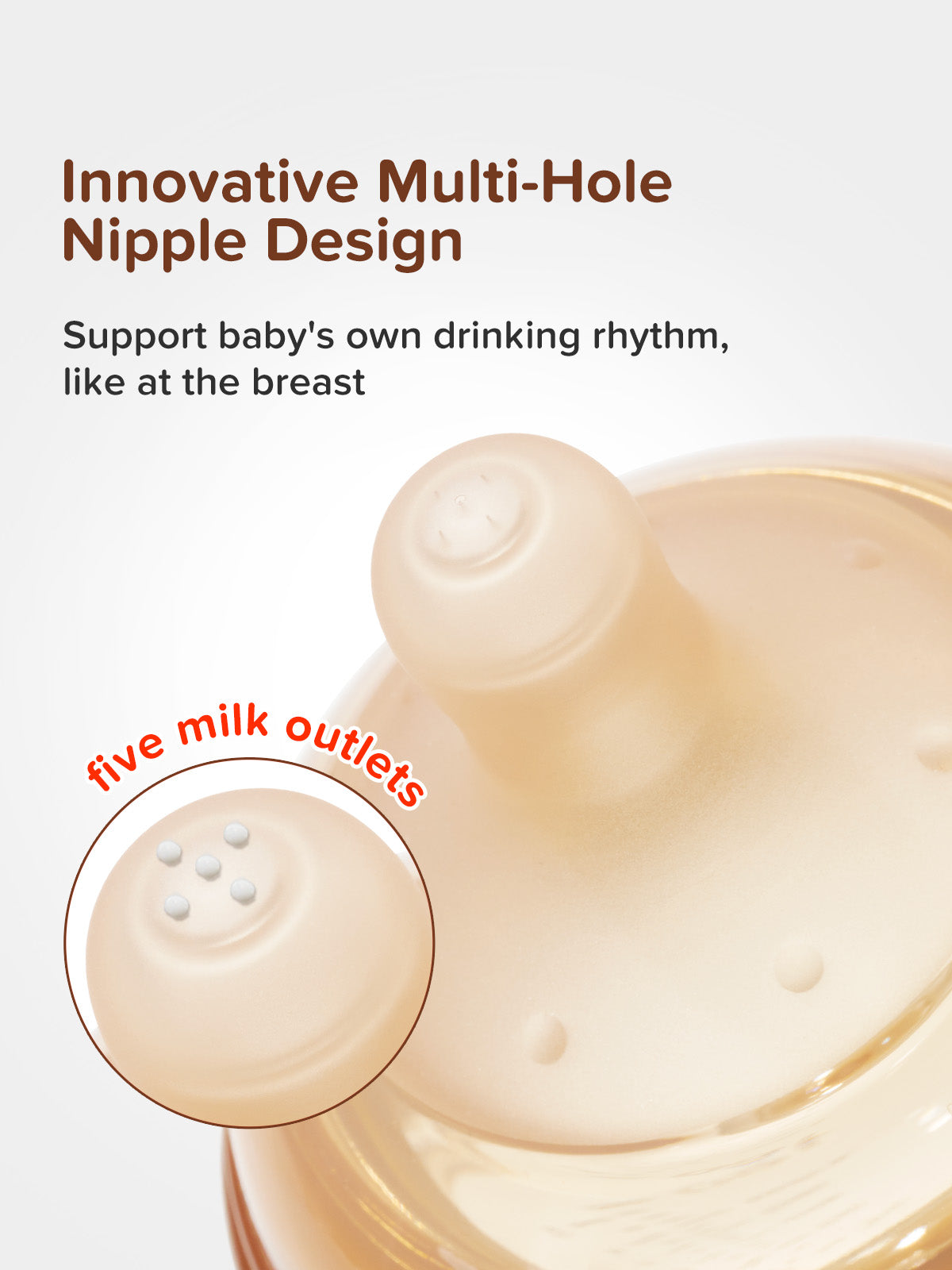Is Your Baby Bottle Letting You Down? Discover the Signs of Inadequate Nipple Flow!
As new parents, one of the key responsibilities is ensuring that your baby is fed properly, which includes selecting the right baby bottle and nipple flow. Proper nipple flow is essential for a positive feeding experience; it ensures that your baby receives adequate nutrition without frustration. When the nipple flow is too slow, it can lead to a myriad of issues, affecting your baby's feeding habits, satisfaction, and even emotional state. Understanding the signs of inadequate nipple flow can help you address potential problems before they escalate, ensuring that your little one gets the nourishment they need for healthy growth and development.

Understanding Nipple Flow
Nipple flow refers to the rate at which milk is delivered from the bottle to your baby. It plays a vital role in feeding, as different babies have varying needs based on their age, weight, and developmental stage. For instance, newborns typically require a slower flow to prevent choking, while older babies may need a faster flow to satisfy their increasing hunger. Manufacturers design nipples with different flow rates, often labeled as slow, medium, and fast, but these classifications can vary. Therefore, it’s crucial for parents to observe their baby’s feeding behavior to ensure they are using an appropriate nipple for their child’s current needs.
Signs That Nipple Flow is Too Slow
Identifying inadequate nipple flow can sometimes be difficult, but there are several signs that can indicate your baby is struggling during feedings. Here are some of the most common indicators:
Frequent Fussiness During Feedings
One of the most telling signs that the nipple flow is too slow is if your baby becomes fussy or frustrated while feeding. They may pull away from the bottle, cry, or show signs of agitation as they wait for milk to flow. A friend of mine shared her experience with her daughter, who would often fuss and cry during feedings. After some observation, she realized that her baby was not getting enough milk quickly enough, leading to her distress.
Long Feeding Times
Prolonged feeding times can also indicate that the nipple flow is inadequate. If you find that your baby takes an unusually long time to finish a bottle, it might be a sign that they are working too hard to get milk. My sister once mentioned that her son would take over an hour to finish a small bottle, which left him tired and frustrated. After switching to a nipple with a faster flow, she noticed that he finished his feedings in a much shorter time, and he seemed more content.
Signs of Hunger Soon After Feeding
If your baby exhibits signs of hunger shortly after being fed, it could suggest that they didn’t receive enough milk during the feeding. Babies have a natural ability to communicate their needs, and if they are reaching for the bottle or crying shortly after a feeding, it may be time to assess the nipple flow. A friend of mine faced this issue, where her little one would cry for more milk just minutes after finishing a bottle. After evaluating the nipple flow, she opted for a faster flow nipple, and it made a significant difference.
Potential Consequences of Slow Nipple Flow
When a baby feeds from a bottle with slow nipple flow, it can have several negative consequences. Firstly, inadequate flow can lead to poor nutrition, as babies may not consume enough milk to support their growth and energy needs. This can affect their physical development and lead to weight gain issues. Additionally, feeding can become a stressful experience for both the baby and the parent, resulting in anxiety and frustration during what should be a bonding time. Psychologically, babies may become more irritable and fussy if they associate feeding with struggle, which can affect their overall demeanor and sleeping patterns.
How to Assess and Address Nipple Flow Issues
To evaluate and address nipple flow issues, parents should observe their baby's feeding patterns closely. If you suspect that the nipple flow is too slow, consider trying different flow rates. Many baby bottles come with interchangeable nipples designed for various flow rates, making it easier to find the right fit for your baby’s needs. Additionally, you can test the flow by turning the bottle upside down; if milk drips out too slowly or not at all, it may be time to switch to a nipple with a quicker flow. Remember to introduce any changes gradually, allowing your baby to adjust to new feeding experiences comfortably.
Ensuring a Positive Feeding Experience
Recognizing the signs of inadequate nipple flow is crucial for ensuring your baby has a satisfying feeding experience. By understanding the indicators of slow nipple flow and being proactive in addressing them, you can help your baby receive the nutrition they need without unnecessary frustration. Remember that every baby is different, and what works for one may not work for another. Regularly assessing your baby's feeding habits and making adjustments as needed can lead to happier, healthier feeding times for both you and your little one.






commentaires